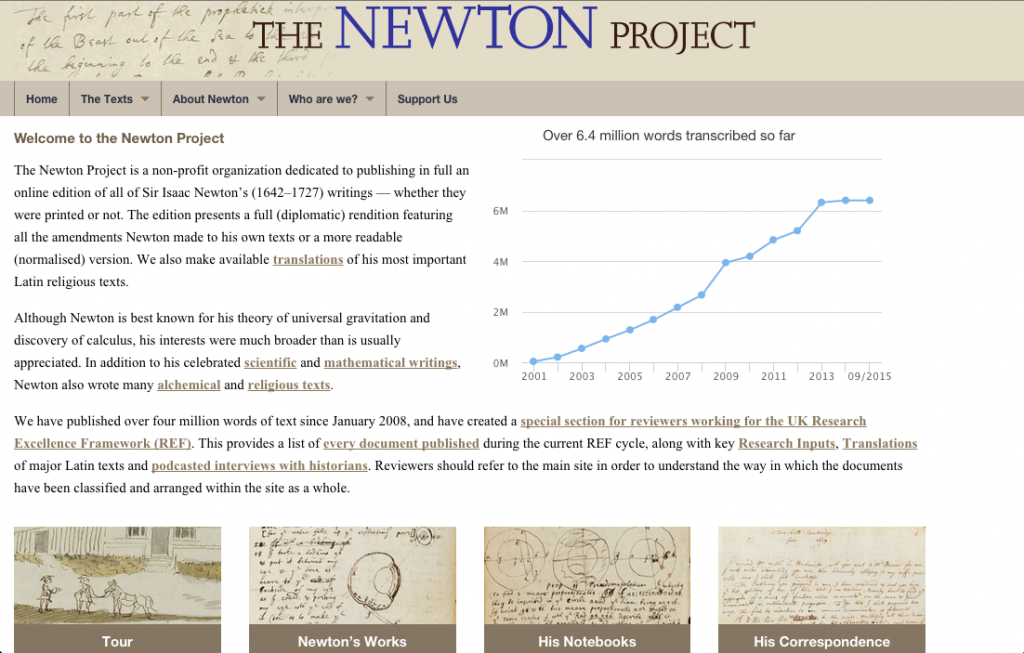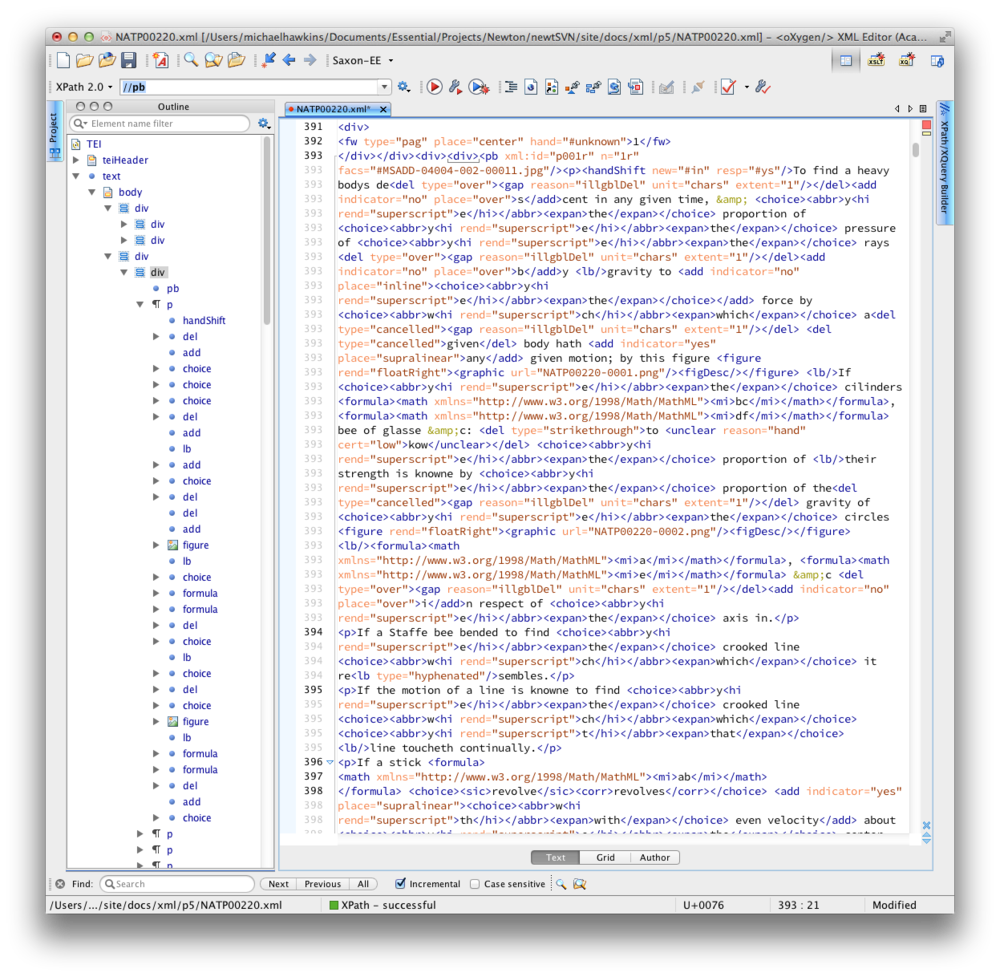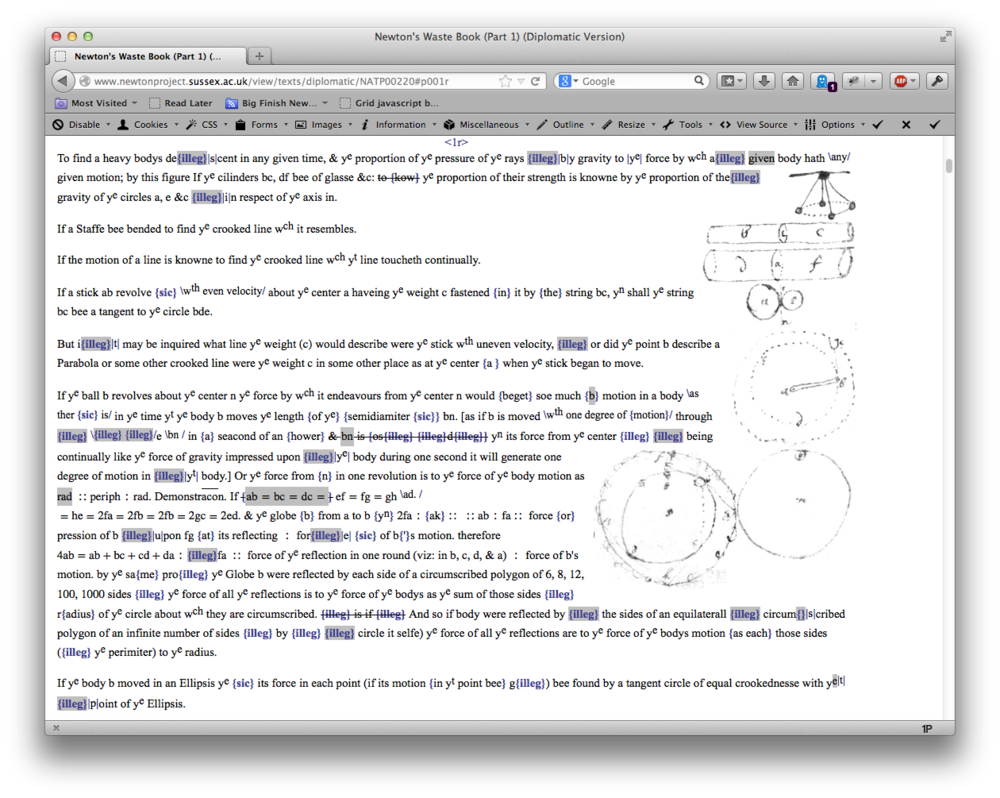When I was in high school, I did some work transcribing unpublished sonnets of Fernando Pessoa, a Portuguese poet who left behind a profusion of notebooks, papers, letters, and other manuscripts covered in his hard-to-read handwriting. Naturally, then, I was drawn to the ambitious Newton Project, a project aiming to transcribe and make available online all unpublished writings of the prolific Sir Isaac Newton. It was very thought-provoking to apply Miriam Posner’s “reverse engineering” approach to digital humanities projects to a project whose beginning steps resemble the work I did in high school.
In her video “How Did They Make That?”, Posner outlines three parts to a digital humanities project: the sources, processes, and presentation. Sources are essentially the data used for the project, processes are what’s done to the data to make them machine-readable, and presentation is how that processed data is made accessible to people.
In the case of the Newton Project, the sources are the many writings, notebooks, letters, and papers left behind by Newton. A few of these come from previously published editions of his work, but the vast majority are transcribed from images of the manuscripts. This transcription is the first process the sources go through. It’s a lengthy endeavor that requires deciphering what’s written, noting what’s been edited, determining how to present edits or illegible words, and reviewing transcriptions. Next, in order to present the writings in a manner that made various edits and illegible passages transparent to the reader, they had to code the text in a way that included symbols that made the changes clear. The About page of the site has some helpful screenshots showing the “back” and “front” of an example text:
These processes result in the presentation of the site seen on the “front”. The similarities and differences between the manuscripts and the final pages on the website really intrigues me. The words, where the transcribers could read them, are the same (except in the “normalized” texts that have gotten rid of some abbreviations etc.), but they are presented in Times New Roman with a standard left alignment, making it far more legible than the original writing. But in this process you lose the visual of the page–how the words were oriented, what materials Newton used, and the manner in which he wrote. For matters of accessibility, this is a reasonable tradeoff, but I do appreciate that alongside some texts they have linked to the original manuscripts. They also did an excellent job of incorporating diagrams, drawings, and other images from the manuscripts into the texts. I recommend look at the text “Certain Philosophical Questions” as an example that combines transparency in transcription, inclusion of images, and a link to the original manuscript.



I really enjoy reading your post! I believe that you have involved a very comprehensive analysis with a clear recognition of this DH project’s sources, a convincing description of the process and finally a cogent delivery of its presentation. Moreover, I like the fact that you have included so many relative links that create more interaction and allow a better interpretation of this DH project’s importance and that you have accompanied your analysis with these cogent media information and technological terminologies.
Alice, this is a very detailed and personal analysis of the Newton Project. I love how your experience with transcription in high school informed your understanding of the work necessary to produce The Newton Project, and gave you empathy for its hard working contributors!
As your screenshots make clear, the team put a lot of work into the detailed TEI specification they built for the project, and tried to capture as much information as they saw fit. Do you see any problems with the decisions they made? Would you have made different decisions? Do you think the site could have been presented in a way that made the volume of information amassed more accessible for those without intimate knowledge of the challenges of transcribing hand-written documents?
I really like how you were able to connect this DH reverse engineering assignment to the work you were done in high school. I think this prior experience you had with Fernando Pessoa as well as being drawn to the Newton Project helped you create such a comprehensive analysis. Not only did I like the fact that you included multiple links into you post, but I thought the links were very well chosen and integrated into your article. The “Certain Philosophical Questions” link really incorporated diagrams, drawings, and other images from manuscripts as you mentioned. Lastly, if you were in charge of the website, what would you change about the layout/instructing techniques of the page to increase its accessibility?